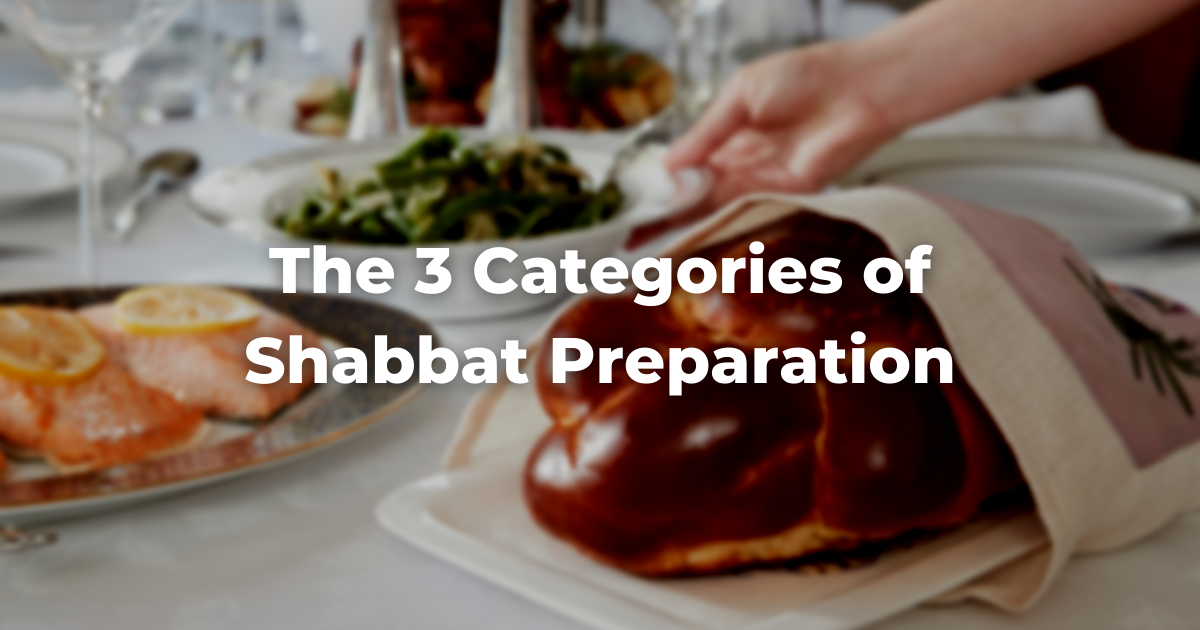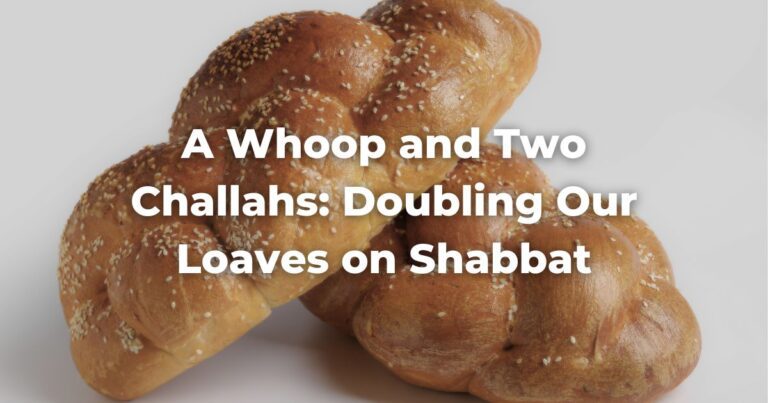The school of Shammai said: “From the first day of the week, prepare for Shabbat” (Beitzah 16a:5), and, as observant moderns know all too well, their lesson is well taken. Shabbat doesn’t happen spontaneously as the sun sets on Friday, or as we light Shabbat candles.
Abraham Joshua Heschel referred to Shabbat as “a palace in time.” That can hardly be denied, but what he left unsaid was just how much work it takes to design, build, and furnish that palace.
There are three major categories of Shabbat preparation that must be attended to: physical setting, food preparation, and personal grooming.
Physical Setting
To the best of our ability, and given the limits of time, we prepare for Shabbat by cleaning our homes, or the houses (or motel rooms or campsites) in which we are planning to spend Shabbat. The reason for this is self-evident: it is difficult to enjoy Shabbat if we are surrounded by a physical mess.
In addition, the very act of cleaning helps us to prepare ourselves for Shabbat spiritually as we transform ordinary space into an arena for sacred activity.
We take care of those things that we cannot, may not, or choose not to deal with on Shabbat: setting timers (called “Shabbos clocks” in some circles) so that we do not have to turn electric lights on or off, setting up electric urns to keep water warm for tea or coffee, and turning off cellular phones.
The level of preparation will, of course, mirror the level of observance in a given home: in homes in which the normal use of solid soap is considered sufficiently transformational to be forbidden on Shabbat, preparing for Shabbat will include filling liquid soap dispensers; similarly, preparing pre-cut toilet tissue and paper toweling will be undertaken in homes in which the prohibition of tearing something even as inconsequential as a square of tissue is considered a forbidden activity.
Some of the Shabbat restrictions listed above are not features of Shabbat in most Conservatives homes—it is the rare Conservative Jew who pre-cuts squares of toilet tissue—yet we mention practices like that in the same breath as more widely observed aspects of observance specifically to make a point that all readers should take to heart:
the common effort behind all Shabbat observance, from its most stringent guise to its most lenient, should always be the same: to seek to know God the Creator through allegiance to the laws of Shabbat, however interpreted.
Regarding Shabbat—and every other realm of Jewish observance—there will be multiple, sometimes even conflicting, interpretations and approaches. (A more lenient ruling is often referred to as a kulla; a more stringent one as a humra).
There are some Jews who believe that stricter is always the more authentic approach, and a sure sign of one’s seriousness and piety. Other Jews will search for the least restrictive rulings, holding that easier is always better.
Conservative Judaism teaches that there are times when it is appropriate to be lenient, and times when it prudent to be strict. Tradition should always be regarded seriously, yet at the same time we do not want it to be seen as onerous and burdensome. As we say when we place the TorahRefers to the first five books of the Hebrew Bible, the Tanakh, also called the Five Books of Moses, Pentateuch or the Hebrew equivalent, Humash. This is also called the Written Torah. The term may also refer to teachings that expound on Jewish tradition. Read more in the Ark, “All its ways are pleasantness” (Proverbs 3:17).
It is also customary to decorate the home and the table with fresh flowers on the eve of Shabbat. In so doing, we are reminded that Shabbat is not just a day for the spirit and the intellect—it is a day of sensory pleasure as well.
Food Preparation
A good deal of Shabbat preparation involves shopping. We must make sure we have enough candles. We must purchase wine and challah, as well as special Shabbat treats, such as cakes, desserts, and snacks.
Inviting guests into our home is a major part of making Shabbat special and this too, obviously, must be undertaken in advance. Similarly, menus for the Shabbat meals need to be planned out in advance and the shopping and food preparation must be completed before the Shabbat candles are kindled— that is, no later than eighteen minutes before sunset. (Foods that Ashkenazic Jews most often associate with Shabbat, like gefilte fish, chicken soup, and cholent, often have cultural, socioeconomic, or halakhic significance.
Sometimes foods became staples because they were plentiful and affordable to the poor, but other foods were expensive delicacies that people scrimped and saved all week to be able to purchase. Other times, foods were chosen for the way they could be prepared and kept warm when ordinary cooking was prohibited.)
All cooking must be completed prior to the onset of Shabbat, and a way must be found to keep already cooked foods warm (SA Orach Chayyim 250). Some leave the oven on throughout Shabbat, but others use an electric warming drawer or tray, or else a blech (a piece of metal that covers the stovetop so that the burners can be kept on low, thereby creating a kind of simple warming tray).
A kumkum (an urn, usually electric, sometimes called a “Shabbos pot”) is filled and turned on and allowed to heat up before the onset of Shabbat. In very observant homes, packages and bottles are opened before Shabbat to avoid the inevitable ripping and tearing of modern packaging.
Personal Grooming
In terms of personal preparation, it is not merely our homes that we must make ready for Shabbat, but our bodies as well: bathing and personal grooming, setting aside and ironing appropriate clothes, going for a pre-Shabbos haircut, or even a pre-Shabbat trip to the gym to work off the tension of a long week of work before returning home to begin Shabbat—all of these are ways of preparing for Shabbat and, although not all will occur every week, the basic idea behind all of them is the same: the Shabbat faithful must ready themselves in the anteroom before entering the palace.
Clothing is especially important. If “clothes make the man” (or the person), then how we dress contributes mightily to our effort to make Shabbat a delight. Wearing weekday clothing puts us in a weekday frame of mind.
Having special clothes for Shabbat and laundering or ironing those clothes in preparation for Shabbat are ancient customs that assist us in approaching the onset of Shabbat in a positive, pleasant way (SA Orach Chayyim 262:2–3).
On Shabbat, we are not only what we eat and what we wear; we are also what we handle or even touch.
Before the onset of Shabbat, we put aside our wallets and our purses, our money, our pens, our electronic devices, and all other articles that are deemed muktzeh and that we are therefore not permitted to handle. (The term muktzeh refers to things that, because they have no licit use on Shabbat, may not be moved or even touched throughout the day.
Thus, although there are forbidden activities one could undertake with a kitchen knife, it is not considered muktzeh because there are many licit uses to which such an implement may be put.
Coins, on the other hand, which have no licit purpose on Shabbat, are considered muktzeh and should not be handled even casually.) The concept is also discussed elsewhere.
In addition to physical preparations, we must make spiritual preparations as well.
In some circles, it is common for men to go to the mikveh every week on the eve of Shabbat. Others put aside money for tzedakah (charity). And many people review the weekly Torah portion on Friday afternoon as a way of preparing for the onset of Shabbat intellectually and spiritually.
Adapted with permission from The Observant Life.
Authors
-

The Observant Life: The Wisdom of Conservative Judaism for Contemporary Jews distills a century of thoughtful inquiry into the most profound of all Jewish questions: how to suffuse life with timeless values, how to remain loyal to the covenant that binds the Jewish people and the God of Israel, and how to embrace the law while retaining an abiding sense of fidelity to one’s own moral path in life. Written in a multiplicity of voices inspired by a common vision, the authors of The Observant Life explain what it means in the ultimate sense to live a Jewish life, and to live it honestly, morally, and purposefully. The work is a comprehensive guide to life in the 21st Century. Chapters on Jewish rituals including prayer, holiday, life cycle events and Jewish ethics such as citizenship, slander, taxes, wills, the courts, the work place and so much more.
View all posts -

Born and raised in Philadelphia, Rabbi Katz received his B.A. from Temple University, and a Bachelors of Hebrew Literature from Gratz College. He was awarded a Masters Degree from the Jewish Theological Seminary, where he received his Rabbinic ordination. In 2005, JTS awarded the rabbi the degree of Doctor of Divinity. Rabbi Katz has been strongly involved in the institutions of Conservative Judaism. He was a regional president of United Synagogue Youth; a staff member for twenty years at Camp Ramah; past president of the Rabbinical Assembly of Nassau-Suffolk; a founder of the Solomon Schechter High School; and a class Rabbi at the Schechter Day School of Nassau County, in Jericho. He also serves on the Conservative Bet Din, the Rabbinic Court supervising conversions on Long Island.
View all posts







